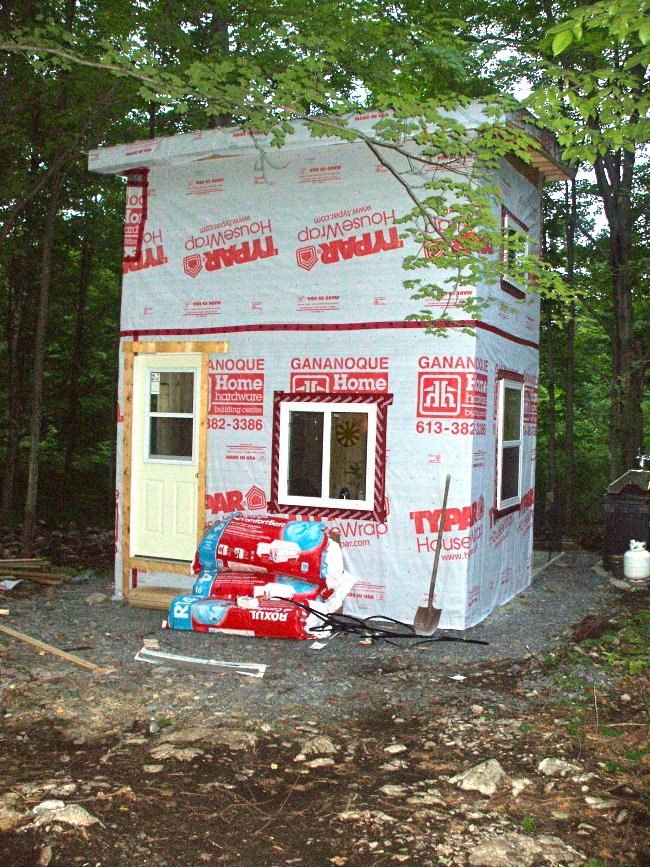I am on grid for a couple of days because I have a few things to take care of that require water and electricity. Part of this is preparation for my interview with Tiny r(E)volution. I wanted to catch up on listening to the podcasts I missed.
It got me thinking about my insulation. Unlike a lot of tiny house builders, I chose mineral insulation. I used R15 for my walls and R45 for the roof. Tiny House Ontario heats easily and stays reasonably cool in the day as well, but this is not just because of the insulation. Due to the fact that I took into account the location of the house on the planet, it is situated to get optimal sun in the winter and as little sun as possible in the summer. The large maples around the house really help with this. Because my house is in Ontario, I would have loved to use R45 for the walls too, but I did not want to lose the interior size to the walls. This was a concern only because I had to keep the footprint of the house under 108 square feet due to building code restrictions.
My reasons for using mineral insulation are clear. I don’t want to reinvent the wheel so here is an article that mirrors my own thoughts on the subject. Plus, it is light and easy to use. If I were to build a framed home again, I would use this product again.
I have to say that it is fun to revisit these early images. It is just 2 years ago, and I know it is a tiny building but I really cannot believe how much the site and home have improved. It gives me incentive to keep on keeping on!



I am not familiar with the term “mineral insulation.” What is it?
Stone wool is a furnace product of molten rock at a temperature of about 1600 °C, through which a stream of air or steam is blown. More advanced production techniques are based on spinning molten rock on high speed spinning wheels somewhat like the process used to prepare cotton candy. The final product is a mass of fine, intertwined fibres with a typical diameter of 6 to 10 micrometers. Mineral wool may contain a binder, often food grade starch, and an oil to reduce dusting.
Thanks! I’d never heard of it before. I wonder if it is called something else here in the USA?
I don’t know… I think that it is manufactured here in Canada so perhaps it has not hit the US market. I really don’t know. It is made by a company called Roxul. It is inexpensive (a little more than that fibreglass crap) but very easy to work with and not so itchy.